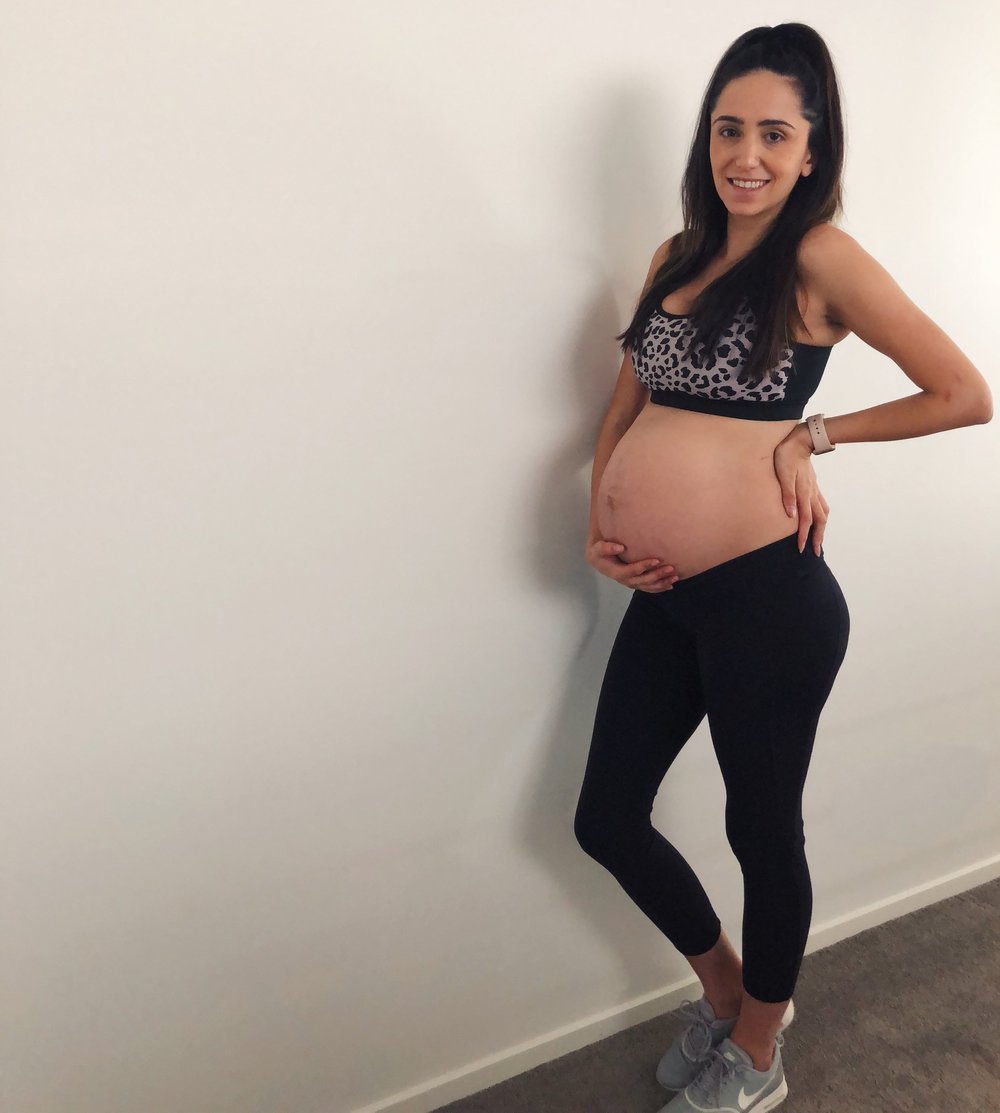
During pregnancy it’s thought that around 1 in 5 women experience pelvic pain but many of us tend to ignore it or not understand it.
Its so important if you’re experiencing PGP (pelvic girdle pain) to speak to your midwife, OB or a women’s health physio about it so they help you to feel and function better. Although it is not at all harmful to your baby it causes huge discomfort for sufferers and limits your abilities to function during your pregnancy.
What is Pelvic Girdle Pain?
Your pelvic girdle is basically the ring of bones at the bottom of your spine – your pelvis. Pain can be felt in the back at the base of your spine in the SIJ or in the front or in your groin in the SPJ or can also cause pain in the hips and down the thighs or radiate into your lower back.
What causes the pain?
During pregnancy with hormones such as relaxin your pelvis becomes more unstable and that combined with extra weight from carrying your baby can put extra load and extra instability through these joints. As you grow your weight shifts and you stand and walk differently than normal and that can also contribute to the pain. If you have had a previous injury to your pelvis or hips or if you’ve experiences PGP in former pregnancies it more likely to occur.
Symptoms:
- Pain in the pelvis, groin, lower back , hips or base of spine.
- “Sciatic” pain – shooting pain down the legs or slight numbness or tingling down the leg.
- Pain in these points when rolling over in bed.
- Pain made worse during sex.
- Clicking or grinding in the hip joints.
- Pain caused by movements such as walking up and down stairs, exercise especially any movement on one leg, walking on uneven surfaces, long periods of walking, standing up after being seated for an extended period of time or when getting dressed.
What to do if you think you have PGP?
If you are experiencing some or all of these symptoms contact your midwife, OB or a womens health physio for a treatment plan and guidance. The early you seek treatment the better and quicker you will get relief.
What can I do to help reduce pain:
- Focus on your posture and keep your spine tall and bottom tucked when standing.
- Distribute your weight evenly over both feet when standing.
- Avoid sitting or standing for too long. Swap position often.
- Avoid lifting anything heavy which can be hard when you’re already a mum but try to help your little one understand mummy cant pick them up all the time.
- If you do need to lift something heavy ensure you maintain correct posture, don’t round your back, bend your knees and contract the pelvic floor.
- Keep knees together when rolling over in bed.
- Roll on to side, contract pelvic floor and use your arms to raise you up when getting out of bed.
- Sleep on your less painful side in bed and sleep with a pillow between your knees and one supporting your lower back also. You can also buy great pregnancy pillows to help this.
- Avoid standing on leg or performing too many one sided movements for exercise unless they have been prescribed by your physio or pregnancy exercise professional.
- Avoid carrying your toddler on your hip.
- You can buy specific belts and support bands to support the pelvis. Speak to your physio about your best option.
- Try to remain active when you can but also rest a lot.
- Try keeping your legs together when you step out of your car.
- Avoid sitting on floor with legs crossed or your body twisted for extended periods of time.
- Some ice or heat treatment may work depending on inflammation – speak to your physio.
- Speak to your doctor about pain medication if you’re not able to function properly and its affecting your daily tasks.
- Work on strengthening the pelvic floor through kegels daily.
- Acupuncture can help.
- Treatment with women’s health physio is crucial.
- Non impact exercise such as swimming can help but avoid breast stroke as this will make it worse.
- Avoid squatting deeper than parallel and keep your stance narrow.
- Avoid step ups or stair climbs during exercise.
Will it affect my future pregnancies?
Its more likely for PGP to occur in each pregnancy if you had it in the one before. To help reduce the severity ensure you work on keeping your pelvic floor strong, strengthening the core and being strong between pregnancies through strength/weight training.
Having a strong core and pelvic floor will help support your posture and hips.
I hope this info has helped you if you’re experiencing pelvic pain. Please speak to your midwife or OB asap if you’re experiencing discomfort.
With Love,
Brittany xx
Sep 3, 2018
Comments: